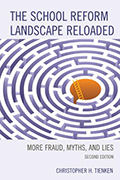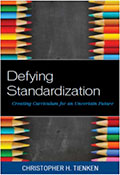Below is an excerpt from Chapter 4 in my book with co-author Don Orlich, THE SCHOOL REFORM LANDSCAPE: FRAUD, MYTH, AND LIES.
Common Core Costs
The cost projections for the first seven years of implementation for the CCSS and national testing made by independent research firms exceed 15 billion dollars (Pioneer Institute, 2012) and could go even higher.
The Pioneer Institute reported:
Over a typical standards time horizon of seven (7) years, we project Common Core implementation costs will total approximately $15.8 billion across participating states. This constitutes a “mid-range” estimate that only addresses the basic expenditures required for implementation of the new standards. It does not include the cost of additional expensive or controversial reforms that are sometimes recommended to help students meet high standards, such as performance-based compensation or reduced class sizes. (p. 1)
Not so astonishingly, most state education bureaucrats did not even anticipate the extent to which full implementation will cost:
Implementation of the Common Core standards is likely to represent substantial additional expense for most states. While a handful of states have begun to analyze these costs, most states have signed on to the initiative without a thorough, public vetting of the costs and benefits. In particular, there has been very little attention to the potential technology infrastructure costs that currently cash-strapped districts may face in order to implement the Common Core assessments within a reasonable testing window. (p. 26)
We need to examine the actual costs to the states alone to meet the accountability condition of NCLB and the CCSS and national testing. How much has been spent already on this folly and how much will be wasted in the future? Obtaining state test costs data proved to be a t difficult search, as the studies about state costs do not use the same definitions. Our defi¬nition is what does the test alone cost, excluding indirect costs—teacher time, school days missed.
The new national tests will raise the stakes even more in terms of spending. Over 300 million has already been spent on developing the next generation of assessments and we predict those will look and “behave” strikingly similar to what we already force upon students. Although they might look shiny and new because most will be delivered via computer (another extra cost not discussed by bureaucrats), the technical characteristics will be no better and the susceptibility of the results to be skewed by students’ socio-economic status will remain.
Essentially, we get the same type of tests we have today, we just spend over 300 million more dollars to change the name. But all this has been reported before. The players are the same this time around and the game plan is unchanged. Why should anyone expect anything different?


